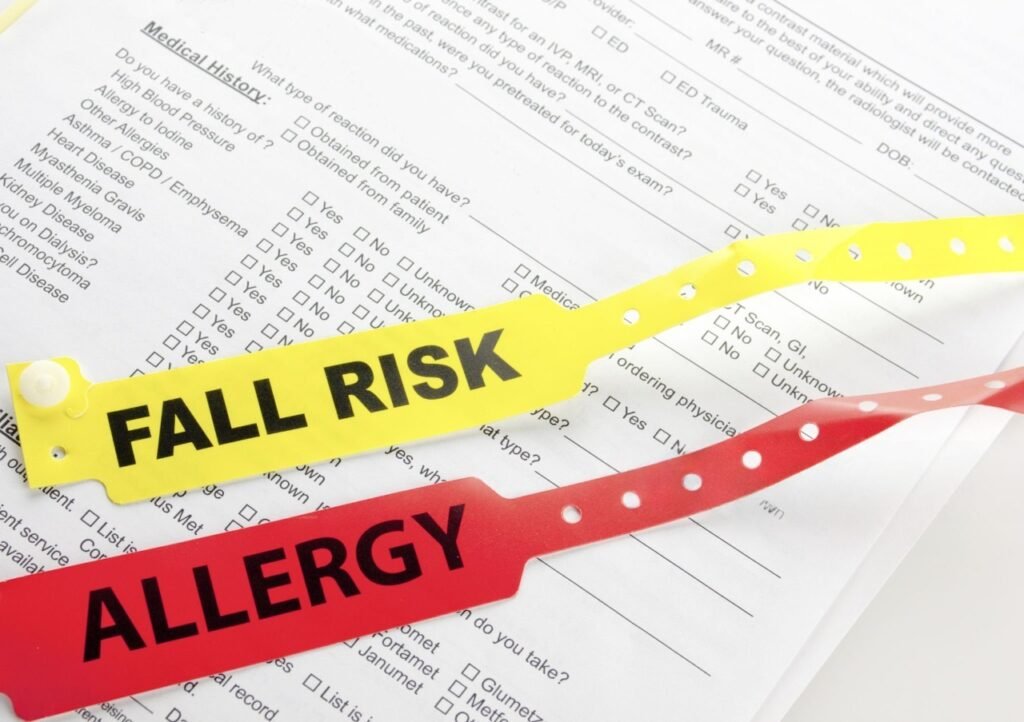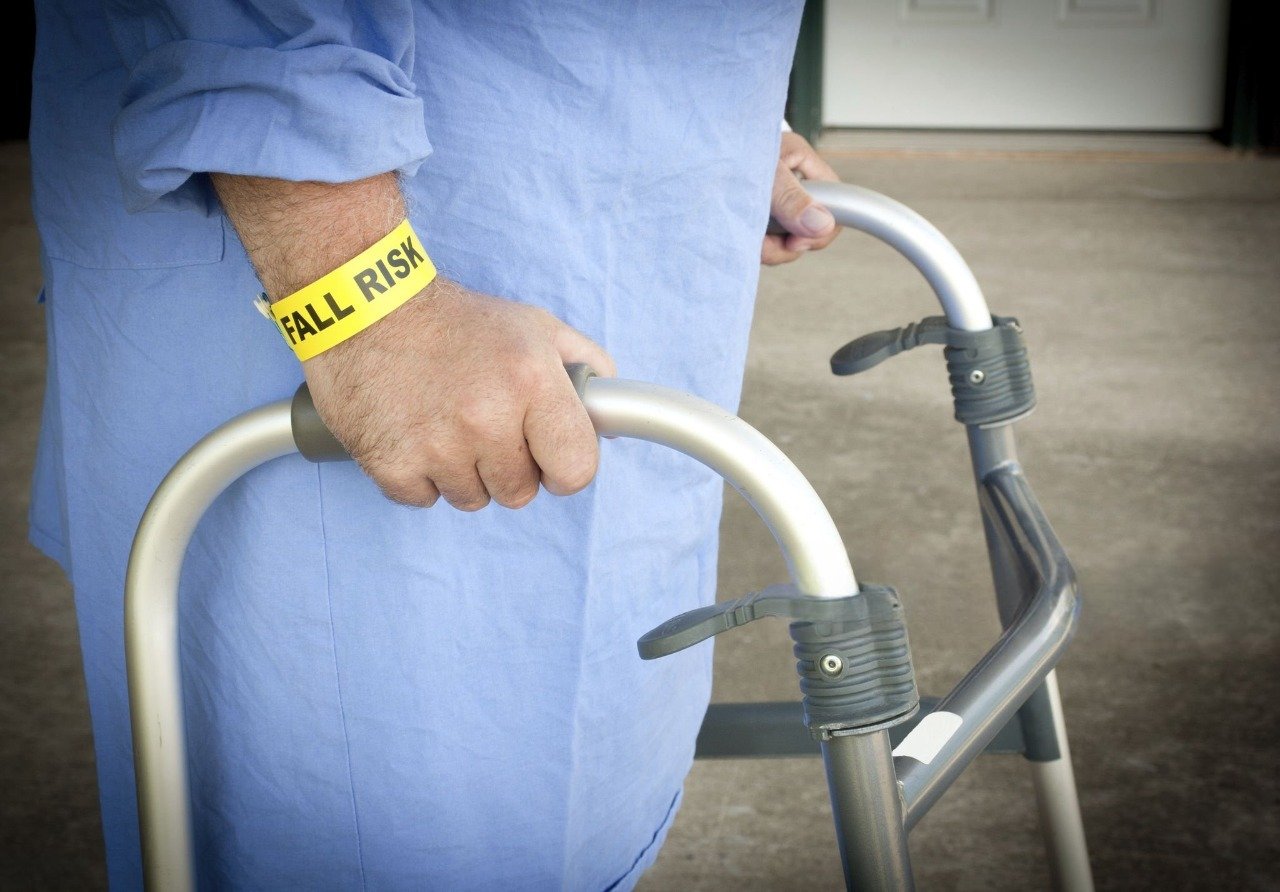Fall Risk Bracelets & Medical ID Wristbands – A Complete Guide to Safety, Prevention, and Peace of Mind
Introduction – Why Fall Risk Awareness Matters
Falls occur in millions of people around the globe year by year. Although some are just minor accidents, some leave victims with severe injuries which may require hospitalization, rehabilitation or even long-term care. Share Frequency of falls is one of the most common causes of hospitalization due to injuries and they mostly occur among the elderly and people with specific health conditions.
Prevention is essential to the caregivers and the medical practitioners. The quicker a patient can be assessed as to his or her risk of falling, the more likely an injury can be averted. The most straightforward, effective solution in doing this is the Fall Risk Bracelet -also known as a Falls Risk Alert Medical I.D. Wristband.
Such bracelets will give the caregivers, medical professionals and even the bystanders an immediate visual notification that they require additional help in terms of mobility or balance. A busy place such as a hospital or nursing home can oftentimes be dangerous during a transfer, and a subtle visual notification can be the difference between a safe transfer and a serious accident.
Understanding Fall Risk – Who Needs Protection?
Intrinsic Factors (Personal Health Risks)
Intrinsic factors are rather particular conditions or features of the people, which predispose them towards falling. These include:
- Having age related weakness of their muscles or not being able to coordinate well.
- Poor balance due to neurological disorders or chronic disease.
- How you see like cataracts, macular degeneration or glaucoma.
- Deficits in the walking pattern due to injury, surgery or disease.
- Side effects to medication such as dizziness, being sleepy or low blood pressure.
- Difficulty in movement because of arthritis, paralysis or ankle pain.
Extrinsic Factors (Environmental Risks)
Whereas intrinsic have to do with a person, extrinsic ones have to do with the environment:
- Slippy floors or patchy surfaces
- Dull lighting in halls and staircase.
- Have rugs and clutter free pathways.
- Absence of aids of mobility like handrails or walking-frames.
A fall risk bracelet won’t remove these hazards—but it ensures that everyone around the person is alert and proactive in minimizing them.
The Role of Fall Risk Bracelets in Healthcare Settings

Fall risk bracelets are standard tools in hospitals, nursing homes, and rehabilitation centers. They’re often color-coded (commonly bright yellow) so they’re instantly visible even in busy environments.
How They Work
- Patient Assessment: A nurse or a physician examines the patterns of movement or a patient who has to evaluate their balance.
- Risk Identification: In the event that the patient is at risk, a fall risk bracelet is placed on him or her.
- Visual Communication: Any staff member who sees the bracelet knows to follow safety protocols—like assisting during movement or providing mobility aids.
- Constant reminder: The bracelet acts as a constant reminder to the patient and its caregivers in a non-verbal system.
Types of Fall Risk Bracelets
1. Disposable Tyvek Wristbands
- Paper-like material is made of tear-resistant lightweight paper.
- Cost-affordable on short-term basis (e.g. hospitalizations).
- Brightly colored so that they may be seen.
2. Silicone Medical ID Bracelet
- Besides being long-lasting, they are reusable.
- Wearable over long-term periods.
- Hypoallergenic and waterproof.
3. Combination Designs
- Use Tyvek and silicone so it is versatile.
- May include L-shape wide body to allow the label to be read easily.
Spotlight: Mediband Falls Risk Alert Medical ID Bracelet
Mediband’s Falls Risk Alert Medical ID Wristband is designed with both safety and comfort in mind. It is a top recommendation as used in hospitals, senior homes, drug stores and personally.
The Mediband Wristband features include: Question and Answer functionality, Sound Technologies, Timing and Ranging, and Image Enhancement.
- Medical-Grade Silicone: Hypoallergenic, made to last, and soft as silk.
- Clear “Falls Risk” Text: Easy to read to recognize quickly.
- Comfortable Fit: They are sold in a variety of sizes and will not irritate the skin.
- Long lasting: No easy to break, water and daily usage.
- Very Low Prices, Quick Delivery: The price is cheap to the individual and wholesale users.
Why Mediband Is Recommended by Medical Professionals?
1. Enhanced Patient Safety
The large designer font and familiar color combination enables staff to locate high-risk patients in the patient population with increased ease, eliminating the possibility of unattended patient movement or insecure patient transfers.
2. Streamlined Care
When it is an emergency, seconds matter. When equipped with the bracelet, paramedics and attending physicians can easily change their treatments to not exacerbate risk factors of falls.
3. Workable in Every Environment
Whether it is a hospital ward or the family setting, such bracelets will allow everyone involved in the lives of patients to know what they require.
Uses and Scenarios in the Real World
Hospital In-patient Care
Patients who are recovering after a surgery tend to develop weaknesses, dizziness, and or mobility problems. A fall risk bracelet will alert everyone including the nursing staff, cleaning staff, physiotherapy staff to accommodate precautionary measures.
Nursing Homes
Falls are a major focus with regard to prevention of the same in elder care facilities. The bracelet makes every member of staff aware of the presence of residents in need of help automatically, even new or ad hoc workers.
ER Triage
In the chaos of an ER, visual alerts save time. A fall risk bracelet will be able to help prioritize safe handling in urgent care
Home Health Care
In-home caregivers and visiting nurses also learn of a visible cue of the potential necessity of additional supervision of the loved one or patient.
Global Standards for Fall Risk Identification
In many countries, yellow is the recognized color for fall riskOther hospitals will have a policy of flagging anyone fitting a certain criterion with a bracelet. The protocols assist in promoting uniformity when it comes to patient care and limit confusion.
Case Study – Preventing a Fall in the Hospital
In one hospital safety audit conducted in 2024, staff noted a significant drop in fall-related incidents after implementing yellow fall risk bracelets for all at-risk patients. According to the review conducted by the nurses the bracelets permitted them to know about vulnerable patients within moments and especially through shifts transfers, where verbal information tending to leave out some information. In one example a post-operative patient made an attempt to stand unassisted but an orderly who noticed the yellow band appeared in time and took the patient back to bed without incident, most likely preventing a severe injury.
Tips for Choosing the Right Fall Risk Bracelet
Conclusion – Safety in Simplicity
- Different raw materials: silicone as a long-lasting material and Tyvek as a short-term material with a stay in the hospital.
- Check the Clear Labeling: Readable font from a distance.
- To make sure it is comfortable, the bracelet must not cause irritation to the skin or be uncomfortable.
- Durability:of more concern to active patients.
- Consider Environment: The designs which are water proof are good to be used in day to day life.
A Fall Risk Bracelet is one of the least complex and lowest-cost injury prevention tools that can be used with at-risk individuals. Whether it’s a disposable Tyvek band for hospital use or a durable Mediband silicone bracelet for everyday wear, the goal is the same—clear, visible communication that keeps people safe.
By recognizing the factors that cause falls and having the appropriate wristband, patients, individuals taking care of such patients, and even medical practitioners would be able to collaborate and inhibit falls and, consequently, enhance their quality of life.
At AEC International, we specialize in providing high-quality, durable fall risk bracelets built to meet the safety demands of 2025 and beyond. Healthcare practitioners across the world have come to rely on our products to be comfortably clear and dependably reliable. Whether you need a single unit or bulk orders with fast delivery, AEC International is your partner in patient safety.
Frequently Asked Questions (FAQ)
Q: Is the fall risk bracelets wearable?
Yes. Mediband uses high-grade silicone but is soft enough to be worn 24-hours a day and in the shower or during all physical activities. It is a water resistant and sweat resistant as well as hypoallergenic material.
Q: Is the colour used to alert about falls the same across all the hospitals?
No. Although yellow is the most recognizable color in most countries, there are other color codes being used by some hospitals. Check your specific facility policy to make sure that you promote communication.
Q: Is it possible to buy in bulk to my medical facility?
Yes. Mediband provides wholesale prices with large-volume discounts, expedited shipping and given the opportunity to customize with facility identifications or emergency names / contacts.
Q: Does the bracelet only target aged patients?
Falls can be an event that occurs to any person- the post-surgery person, the person with a neurological problem, a person with vision problems, as well as a person temporarily using medication that causes dizziness.
Q: Does the bracelet conflict with the wearable devices?
No. The bracelet does not interact with or interfere with smartwatches, fitness trackers, or medical monitoring equipment and is passive, it contains no electronics.
Q: Does my falls risk bracelet allow me to travel?
Yes. It can be easily carried on in TSA, does not trigger airport security check point bells and is also globally recognized, so it is especially convenient to take during international travel when language difficulties may arise.
Q: Is it possible to change the text of my bracelet?
Yes. Mediband can be personalized with engravings, including the addition of a list of medical conditions, allergies, or an emergency contact number to compliment the alert to falls that is present.
Q:Is it safe in case of sensitive skin?
Yes. It is made with a hypoallergenic, latex-free silicone, with the aim of having a long term body contact with the skin without causing irritation.
Q:Does the bracelet actually benefit in a fall prevention?
Whereas the bracelet does not prevent a fall, the response time in nursing homes with the bracelet is much quicker. In 2025, the greatest safety net means that the bracelet is used in combination with systems based on predictive monitoring.


